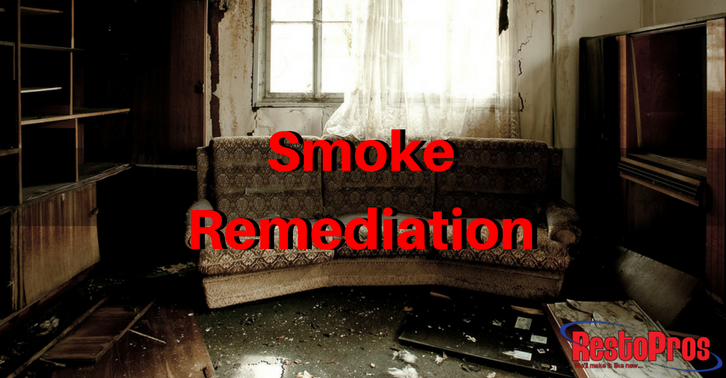 Smoke is obvious. Smoked meat and cheese has a very deep flavor to it that is unique enough for some to be able to answer what type of wood was used when the meat was smoked. All smoke is like this. The scents and effects of smoke, whether it’s deliberate in cooking, a side-effect of smoking, or the damage caused by a small fire in the home, are always noticeable.
Smoke is obvious. Smoked meat and cheese has a very deep flavor to it that is unique enough for some to be able to answer what type of wood was used when the meat was smoked. All smoke is like this. The scents and effects of smoke, whether it’s deliberate in cooking, a side-effect of smoking, or the damage caused by a small fire in the home, are always noticeable.
Here’s the problem: any fire in your home fills the room with smoke. Small fires or controlled fires, such as a burnt meal or a warm fireplace, release some smoke but rarely release enough to damage surfaces. But small out of control fires can lead to deposited soot, charring on the walls, objects permeated with the smells of smoke. But not all is lost, while most damage will require replacement, there are a few things you can do to fix smoke damage.
Cleaning the Walls
First, if the damage is just a light layer of soot that’s been deposited on the walls, it’s possible to clean it off. A car sponge, warm water, and Trisodium Phosphate Cleaner (TSP) are effective for cleaning the discoloration caused by soot. TSP is a very harsh cleaning fluid so you will need gloves, goggles, and a mask while washing down the affected areas. Sensitive materials are not going to respond well to TSP either which may lead to need a replacement of wallpaper.
Create a solution of 1 tablespoon of TSP to 1 gallon of warm water. Use a sponge to clean the walls and surfaces vigorously then use a damp rag (clean water only) to rings the area. Continue this process until the soot and damage has been removed. Be cautious, you don’t want to let water seep into cracks and baseboards where it can damage drywall or lead to mold.
If the problem is deeper than just a discoloration (or repeated cleanings with TSP don’t seem to clear away the discoloration), it’s time to replace the damage. Charred paint will need to be stripped so that the wall can be primed and painted once again. Walls that have bubbled up and blistered are going to need to be repaired or replaced entirely. The heat from fire and smoke can permanently damage paints and finishes leading to warped walls, molding, and surfaces. Unfortunately, most of this will simply need to be replaced.
Dealing with the Smoke Smells
Smoke, like most odors, is fought by removing the source of the smell and clearing the air. Scented candles and other air fresheners simply add a scent to the air that will mix and eventually smell worse than the original smoke odor. Rather than adding to the mix, de-odorize first.
Vinegar is a natural deodorizer. Use it to clean surfaces, floors, carpets, and even furniture (once it’s been diluted) to remove smoke scents from everything in your home. Leave out a few bowls of vinegar to help absorb airborne odors.
Baking Soda makes a great alternative (obviously don’t mix both of these at the same time). Spread baking soda on carpets and leave it for an hour or so to absorb the odor. Then vacuum the powder back up and repeat as needed.
Activated charcoal is, without a doubt, the strongest deodorizer around. Placing packets and bowls of powdered charcoal around the room will help to remove the smoke scent. This is a little more expensive than vinegar or baking soda, but is typically a stronger method.
Fresh air is your next recourse once the source of the smell has been removed. Cycling clean air into the room and removing the odor-laden atmosphere is key to refreshing any room.
Aerosol deodorizers come with their own baggage but will do in a pinch. If you need to clear the odor from a room fast, get a spray deodorizer to help clear out the air quickly.
Don’t forget to follow RestoPros on Facebook, Twitter, LinkedIn, and Google+ for new Updates, News, and Discounts!
